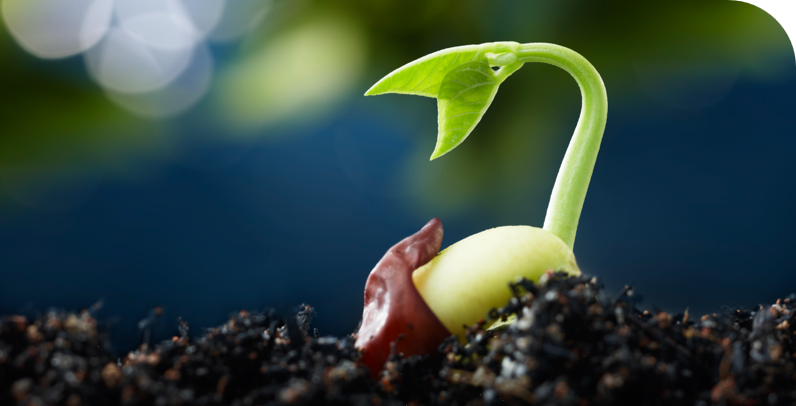- The difference between soil and soil
The soil, covered on the surface of the land, can be used for plant growth if the external conditions such as light, temperature, and precipitation are sufficient. Its parent metal is a rock weathering that is transported and accumulated by water or wind. It is formed under the interaction of climate, biology (including human factors) and topography during a certain period of time. The soil is at the core of the ecosystem. In addition to the terrestrial organisms such as plants, it can decompose the leaves and animal remains and maintain the normal biogeochemical cycle of the elements. Soil is one of the elements that make up the environment along with the atmosphere and water.
Now, the words “earth” and “soil” are generally used separately. In other words, after the weathering of the rock, “soil” is formed; after the rock is weathered into fine particles, if it is in a state suitable for plant growth due to biological action, it is called “soil” and has a clear distinction from “soil”.
- Soil generation
Scientists use radioactive elements to determine the age of meteorites, and analyze the lunar rocks brought back by the Apollo program. It is speculated that the earth we live in has been around 4.6 billion years since its birth. It is generally believed that when the earth was first born, the surface of the earth and the surface of the moon did not differ much, but now it has become completely different. This difference is due to the absence of air and water on the moon, so no creatures were born; and the earth was born with a rich variety of creatures.
Since there is no air (vacuum) on the surface of the moon, it is greatly affected by the sun. Intense ultraviolet rays and temperature differences (130°C to 170°C) make the rock weather into particles (powder). Such particles are called dust and are not considered soil.
In contrast, in the earth under the protection of the atmosphere, the temperature difference is very small (40 ° to 40 ° C), and the earth has water, microorganisms can inhabit the weathered rock particles, decompose, condense, polymerize organic matter, form Humus, which forms an environment suitable for biological growth—soil
Difference between soil and soil
- From soil to soil
Biological activity is an indispensable factor in the process of changing from soil to soil. The first time there was a creature on earth, about 4 billion years ago; and the first time the soil appeared on Earth, it should be at this time. The soil and the creatures appear together on the land, and the relationship is inseparable until today.
The rock turns into soil, and in addition to physical causes such as collapse, the creature also has the power to turn the rock into soil. It is generally believed that the creature that turns the demonstration into a soil is a moss (lichens) that requires a little nutrients on the rock to grow. We can often see mossy rocks in the mountains or in ancient temples. Below the moss, there is already a thin layer of traces of soil, and it is soil containing clay, microbes and organic matter.
Soil born from rock
When water or depressions on the surface of the rock accumulate water and create an environment with moderate moisture, the moss that can use the sun will begin to invade. As the moss gradually proliferates, the surface of the rock covered with moss gradually turns into soil. At this time, there are various microorganisms that can use inorganic substances or organic substances to proliferate in the soil. Under the action of these microorganisms, the nature of the soil will gradually become an environment suitable for plant growth, that is, “soil”.
When grasses appear on the newly-born soil, the soil will gradually increase due to the roots of the grasses and the action of microorganisms, and become an environment suitable for the growth of shrubs. Then tall trees will appear, and the plant communities will gradually emerge. .
Changes in plant communities on the ground also have a large impact on the environment beneath the ground. The roots of various plants stretch down to secrete organic acids that dissolve rocks; after wilting, in addition to being a source of energy (food) for microorganisms, they can also create fine voids. The action of the roots of the plants promotes the decomposition of rocks and the activation of microorganisms, causing the accumulation of humus and continuing to produce new soils, and even deeper layers of rock gradually become soil layers.
After large plants begin to grow, organic matter such as fallen leaves will bring more supplies to the surface, and a large amount of humus will accumulate, making the soil more fertile.
Soil developed with plants
After a period of time, the nutrients in the soil begin to leaching; after the nutrient is lost, the soil gradually becomes an environment that is not suitable for plant growth, that is, “soil.” As mentioned above, in the hundreds to tens of thousands of years, the soil is repeatedly born and disappeared, disappeared and reborn.

